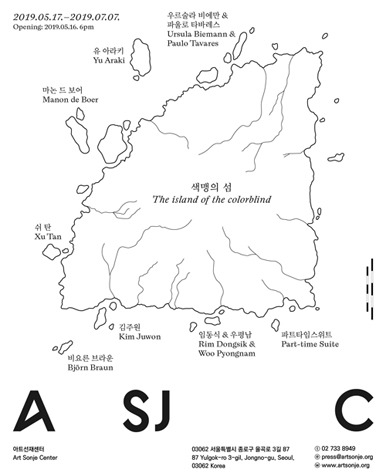
| Period| | 2019.05.17 - 2019.07.07 |
|---|---|
| Operating hours| | 12:00pm - 07:00pm |
| Space| | Art Sonje Center/Seoul |
| Address| | 87, Yulgok-ro 3-gil, Jongno-gu, Seoul, Republic of Korea |
| Closed| | Every Monday, January 1st, Lunar New Year's Day, Chuseok holidays |
| Price| | General: 5,000 won Student (primary, middle, high school, college student's card): 3,000 won |
| Phone| | 02-733-8949 |
| Web site| | 홈페이지 바로가기 |
| Artist| |
김주원,마논 드 보어,비요른 브라운,쉬 탄,우르술라 비에만 & 파울로 타바레스,유 아라키,임동식 & 우평남,파트타임스위트
|
정보수정요청



|
|
Exhibition Information
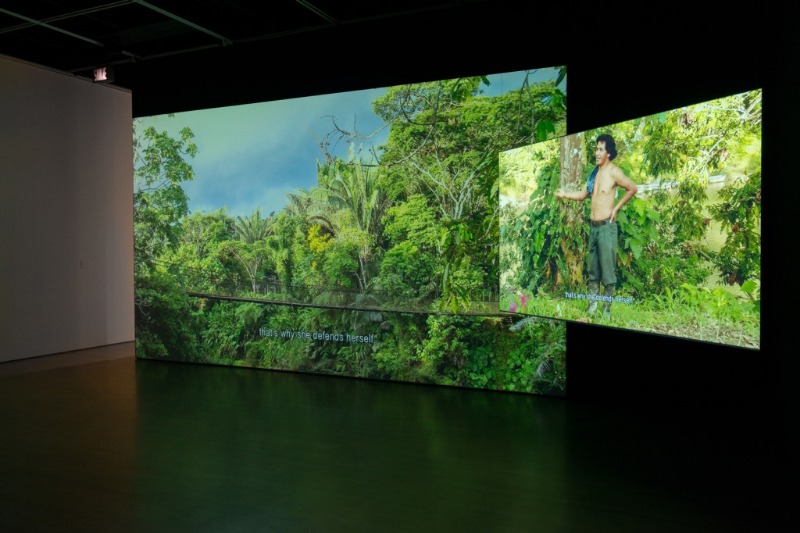
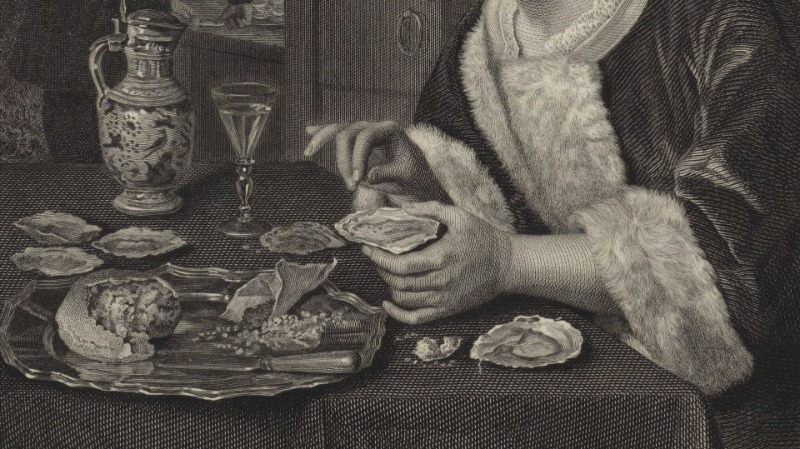
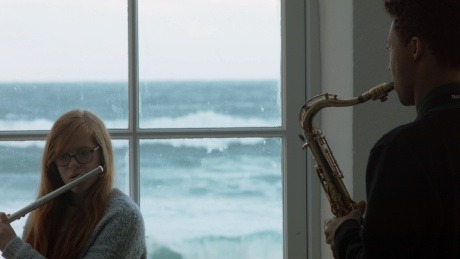
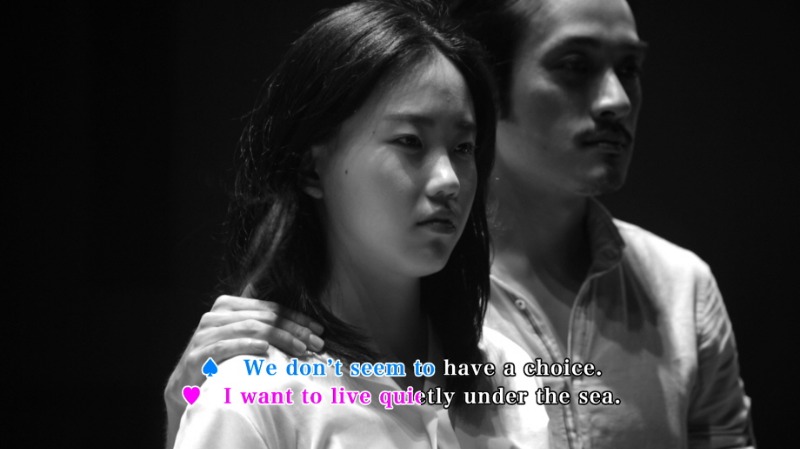
The exhibition, which started with the question "How to Live Together?" will feature eight domestic and foreign artists, including Kim Joo-won, Bjorn Brown, Manon de Boer, Ursula Biemann & Paulo Tabares, Xu Tan, Yu Araki, Lim Dong-sik & Uphyongnam and Part Timeswit. They talk about the different ways of life and the ways in which other people with different identities exist and relate together in the world, including the question of human-natural coexistence that is emerging today. Now that the images of discord have become so rich and hard to breathe through pollution, wartime draws on empathy and ecological thinking to think about co-existence as a prerequisite for life. 'Compassion' refers to an attempt to experience psychological equality between one another while recognizing the differences between the subject and oneself, and to follow the thoughts of others in a situation through a symbolic exchange of positions. How can the form of empathy be visualized before forcing it, or insisting on its necessity, and how can work show it? How to live together is a question that forms the basis for ecological thinking. Ecology is primarily reminiscent of nature, but "ecological thinking" is a consideration of coexistence beyond stressing natural protection or emphasizing awareness of environmental destruction. Rapid air pollution and the climate crisis felt by the skin stem from a fundamentally diverse system of typing. The environmental thinking of learning beyond space and a bell and countries and of capitalism, feminism, class boundaries and bells around us for various relationships in ‘environment’.Thinking the expansion of inclusion. The exhibition introduces work with a form of empathy through symmetrical exchange of positions within the magnetic field of such a wide range of ecological thinking. It presents a shift in the status of the human-centered structure in the relationship between nature and man, drawing the situation of "being together" in the relationship between people, and looking at the joy and the other side together. The exhibition imagines an archipelago of coexistence, not an island of isolation, proposing that the problems of ecology start from how to look at each other and spend time together in fundamentally microscopic relationships. ● Guide to the exhibition link program We will begin accepting applications two weeks before the event, so please refer to the schedule below. [Atist Talk] Yu Araki May 17, 2019 (Friday) 3 p.m. Part Timeswit June 15, 2019 (Tuesday) 3 p.m. Kim Joo Won June 29, 2019 (Tuesday) 3 p.m. Lim Dong Sik & Woo Pyung Nam July 6, 2019 (Tuesday) 3 p.m. an exhibition lecture Practice of Art in Simultaneous Age of Ecology and Beauty Yoo Hyun-joo (Aesthetics, Head of Ecology and Art Institute) June 1, 2019 (Tuesday) 3 p.m. the virtues of modern people for coexistence: ecological sensitivity Kim San-ha (Wild Life Scholars, Director General of the Bio-diversity Foundation) June 22, 2019 (Tuesday) 3 p.m.
